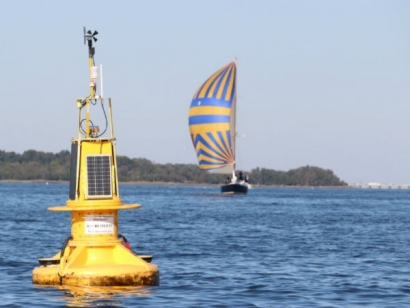
“Ocean-based scientific instruments provide data critical to our understanding of the environment that benefits public safety and our economy," said Neil Jacobs, Ph.D., acting NOAA administrator. "This prize will help spur technological innovation so our next generation of ocean observing instruments have the power they need to deliver more high quality and timely ocean data over a longer period of time.”
The Ocean Observing Prize is the second prize challenge under DOE’s Powering the Blue Economy initiative, a portfolio of projects that explores self-sufficient applications of marine renewable energy to power desalination, ocean observing, and offshore aquaculture, among others.
The Ocean Observing Prize will provide innovators a pathway from concept to design to construction, with two separate competitions and prize awards during each phase. The first competition will solicit novel concepts that pair ocean observing technologies with marine energy systems to address five broad themes: charging unmanned systems; communications and underwater navigation; extreme environments; buoys, floats, and tags; and innovative ideas. The prize will then have follow-on “Design” and “Build" competitions to bring innovators’ ideas to reality.
The Ocean Observing Prize is led by the Office of Energy Efficiency and Renewable Energy Water Power Technologies Office at DOE and NOAA’s Integrated Ocean Observing System program. The Ocean Observing Prize is administered by the National Renewable Energy Laboratory on the American Made Challenge platform. This prize builds on the success of DOE’s Waves to Water prize, which aims to demonstrate small, modular, cost-competitive desalination systems that use the power of ocean waves to provide clean drinking water for disaster recovery and for remote and coastal communities.
Photo: A NOAA Chesapeake Bay Interpretive buoy uses cell phone and internet technology to share he Bay’s weather and water conditions in real time. Solar panels keep the buoy’s batteries charged, which provide power for the observing sensors and transmission capabilities. (NOAA)

